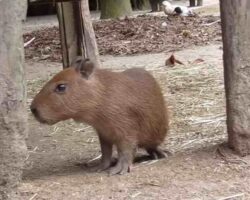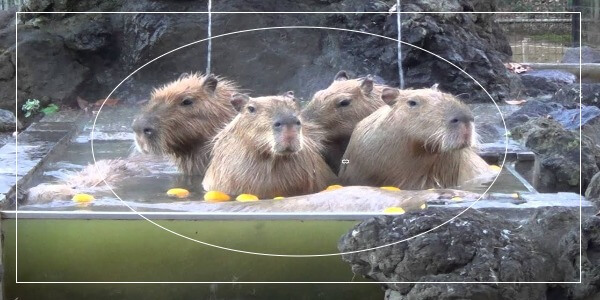Are you captivated by the charm and charisma of capybaras? These lovable and social creatures have captured the hearts of many animal enthusiasts worldwide.
However, suppose you reside in Ohio and are considering bringing a capybara into your life. In that case, you may wonder about the legality and practicality of such a decision.
While capybaras are undeniably adorable, it’s essential to understand the legal landscape surrounding their ownership. In the following sections, we will uncover the specific regulations and restrictions imposed by Ohio authorities, zoning laws, and the permits or licenses required to keep these exotic animals.
By familiarizing yourself with the legal framework, you can proceed confidently, knowing you are adhering to the law while embarking on your Capybara ownership journey.
Can I Own a Capybara in Ohio?
You can own a capybara in Ohio, but certain regulations and requirements must be considered. Ohio permits the ownership of capybaras as exotic pets, but it is essential to adhere to local laws and regulations.
You may need to obtain a permit or license, and there might be restrictions on zoning and enclosure specifications. Researching and complying with these regulations is crucial to ensure legal ownership.
Capybaras have specific care needs, including a suitable habitat, proper diet, and socialization. They require a large, secure enclosure with access to water, as they are semi-aquatic animals. Additionally, capybaras are social creatures and thrive in the company of their kind or other compatible animals.
What are the Challenges of Owning a Capybara in Ohio?
Before you embark on the adventure of capybara ownership, it’s essential to be aware of the challenges that come along with it. Understanding these challenges will help you make an informed decision and ensure the well-being of both you and your Capybara companion.
1. Size and Space Requirements
One significant challenge of owning a capybara in Ohio is its size. Capybaras can grow to be over four feet long and weigh 150 pounds. They require ample space to roam and exercise.
Providing a suitable outdoor enclosure with secure fencing can be challenging for some individuals, especially those in urban or limited-space environments.
2. Dietary Needs
They are herbivores primarily consisting of grasses and other vegetation. Sourcing and providing a diverse range of suitable food options may require extra effort and resources, as capybaras have high fiber needs and should avoid certain foods harmful to their digestive system.
3. Specialized Veterinary Care
Finding a veterinarian experienced in treating exotic animals, including capybaras, can be a challenge in certain regions of Ohio. Capybaras have unique health considerations, and it is essential to have access to a knowledgeable veterinarian who can provide routine check-ups and vaccinations and address any potential health issues that may arise.
4. Environmental Needs
Ensuring a suitable aquatic environment for capybaras in Ohio can be challenging, particularly in colder climates where maintaining a warm and appropriate water temperature might require additional resources.
5. Socialization and Companionship
Providing appropriate socialization and companionship for capybaras can be demanding, as they may become stressed or develop behavioral issues if kept alone for extended periods.
Finding compatible capybara companions or other animal species to interact with can be challenging and requires careful consideration.
6. Long-term Commitment
Capybaras are intelligent and sociable animals requiring mental stimulation, regular exercise, and consistent care. This long-term commitment can be challenging for individuals with uncertain living situations, frequent travel plans, or limited resources to provide the necessary care and attention capybaras need.
DON’T MISS THSESE POSTS:
- Can You Legally Own a Pet Capybara In Florida?
- How Do Capybaras Survive in the Amazon Rainforest?
- Are Capybaras Dangerous Animals?
- Do Capybaras Have Claws Like Dogs & Cats?
- Places Where It Is Legal To Keep a Pet Capybara In The USA
- How Do Capybaras Maintain Homeostasis?
- How To Treat a Wounded Capybara
What are the Housing Requirements for Capybaras In Ohio?
Capybaras are large rodents that need ample space to roam and exercise. A spacious enclosure is necessary, preferably with both indoor and outdoor areas. The enclosure should be secure, with high fences or walls to prevent escape and protect the capybaras from potential predators.
The enclosure should also provide access to clean water for swimming, as capybaras are semi-aquatic animals and enjoy spending time in the water. A shallow pool or pond area is recommended to accommodate their natural behavior.
Additionally, the housing should include suitable shelter options, such as huts or structures, to provide shade, protection from extreme weather conditions, and a sense of security for the capybaras. It’s important to ensure that the housing meets the zoning laws and regulations specific to your area in Ohio.
Some local authorities may have additional requirements or restrictions for keeping capybaras as pets. Remember, proper maintenance and regular cleaning of the enclosure are vital to ensure the health and well-being of capybaras. Consulting with exotic animal experts or organizations experienced in capybara care can provide further guidance on meeting the housing requirements for capybaras in Ohio.
Can Capybaras Be Kept Alone, or Do They Need Companionship?

Having a companion capybara provides them with mental stimulation, social interaction, and a sense of security. Capybaras are known to form strong bonds with their companions and engage in behaviors like grooming and play, which are essential for their well-being.
If you’re considering owning a capybara, having at least two capybaras to fulfill their social needs is ideal.
However, it’s important to note that keeping multiple capybaras requires a larger living space, adequate resources, and careful introduction and monitoring to ensure compatibility.
While capybaras can bond with other animal species or even humans to some extent, it’s essential to allow them to interact with their own kind whenever possible.
Consulting with experienced capybara owners or exotic animal experts can provide valuable insights into maintaining a suitable social environment for these unique and sociable creatures.
What Do Capybaras Eat, and How Should I Feed Them in Ohio?
Capybaras are herbivores with unique dietary requirements. They primarily feed on grasses, aquatic plants, and vegetation in their natural habitat. Regarding feeding capybaras in Ohio, it is essential to replicate their natural diet as closely as possible to ensure their health and well-being.
The diet of a capybara should consist mainly of high-quality grasses and hay. They should have access to a constant supply of fresh, pesticide-free grass or hay, such as timothy hay, Bermuda grass, or meadow hay. This helps mimic their natural grazing behavior and provides the necessary fiber for proper digestion.
In addition to grass and hay, capybaras can enjoy various leafy greens and vegetables. These include romaine lettuce, kale, spinach, dandelion, and collard greens. It is important to introduce a variety of greens to ensure a well-rounded diet. However, vegetables like iceberg lettuce should be avoided due to their low nutritional value.
Supplementation is another crucial aspect of capybara nutrition. They require an adequate source of Vitamin C, as they cannot synthesize it independently. Commercially available Vitamin C supplements formulated for guinea pigs or other small herbivores can be added to their diet to fulfill this requirement. However, it is important to consult a veterinarian experienced in exotic animal care to determine the appropriate dosage.
Feeding capybaras in Ohio should also include fresh water for drinking and for them to soak in. Capybaras are semi-aquatic animals, and access to a shallow pool or a large water container is important for their well-being.
When feeding capybaras, monitoring their diet and ensuring they are not overfed or consuming unhealthy foods is crucial. Obesity can be a concern, so portion control and a balanced diet are essential.
Where Can I Find a Reputable Capybara Breeder or Rescue Organization in Ohio?
If you’re searching for a reputable Capybara breeder or rescue organization in Ohio, there are a few options to consider. While capybara breeders may be limited in number, rescue organizations dedicated to exotic animals might offer opportunities to adopt capybaras in need of a loving home.
Here are some avenues to explore:
1. Exotic Animal Breeders
Research exotic animal breeders in Ohio who may specialize in capybaras. Look for breeders with a good reputation, positive reviews, and a track record of ethical breeding practices.
It’s crucial to ensure the breeder follows legal guidelines and provides appropriate care for their animals. Contact them directly to inquire about Capybara availability and any specific requirements they have for potential owners.
2. Local Animal Shelters and Rescues
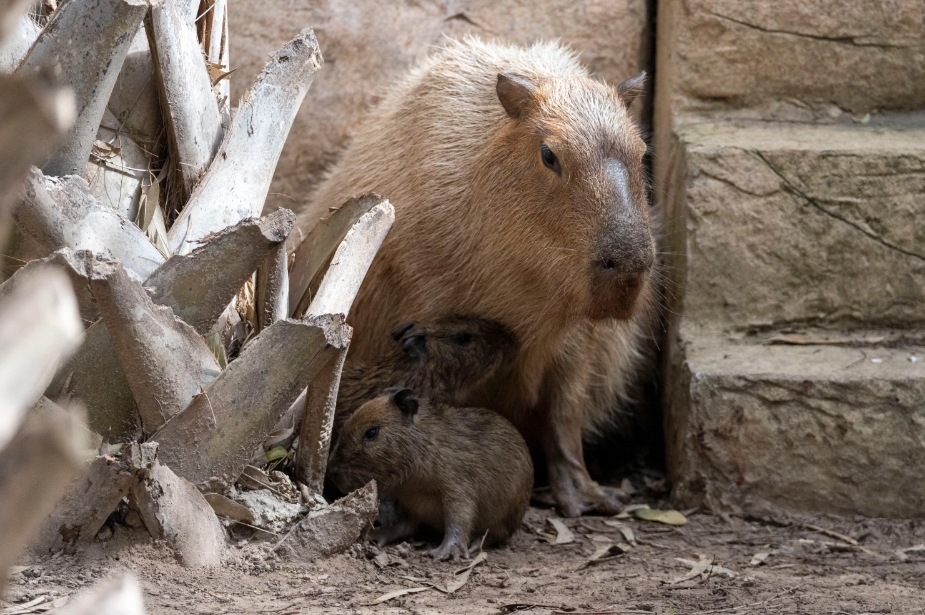
While capybaras might not be commonly found in traditional animal shelters, some exotic animal rescue organizations exist in Ohio. These organizations work tirelessly to rehabilitate and rehome various exotic animals, including capybara.
Reach out to local shelters and rescue groups specializing in exotic animals to inquire about the availability of capybaras or to express your interest in adoption. They can provide guidance on their adoption process and any prerequisites for potential adopters.
3. Online Exotic Animal Forums and Networks
Join online forums, groups, or social media communities dedicated to exotic pet owners or capybara enthusiasts. These platforms can provide valuable insights, recommendations, and connections to reputable breeders or rescue organizations.
Engage with experienced Capybara owners who can share their knowledge and potentially point you in the right direction.
Can Capybaras Be Kept Alone, or Do They Need Companionship?
Capybaras are highly social animals and are known to thrive in group settings. In their natural habitat, these large rodents form herds of multiple individuals. Therefore, capybaras should generally be kept with companions rather than in solitary environments.
Companionship plays a crucial role in capybaras’ well-being and overall mental health. Interacting with their kind allows them to engage in natural behaviors, establish social hierarchies, and communicate through vocalizations and body language. Living with companions provides opportunities for play, grooming, and mutual protection, which are essential for their social development.
Capybaras should be housed with at least one or more fellow capybaras to meet their social needs. However, it is essential to consider the space requirements and ensure that the enclosure is large enough to accommodate multiple capybaras comfortably.
If keeping multiple capybaras is not feasible due to space constraints or other limitations, alternative companionship options can be explored. Some capybara owners have successfully introduced compatible species as companions, such as well-socialized dogs, miniature pigs, or other animals that have been raised alongside capybaras and exhibit compatible behavior.
Conclusion
Ohio’s laws regarding exotic animal ownership, including capybaras, should be thoroughly researched and understood. Permits or licenses may be required, and there might be specific regulations and restrictions to follow, such as zoning laws and enclosure requirements.
Capybaras have specific care needs that should be taken into account. They require appropriate housing, a balanced diet, and access to veterinary care from professionals experienced in exotic animal care. Additionally, their social nature means they thrive in the company of their kind or compatible companions.

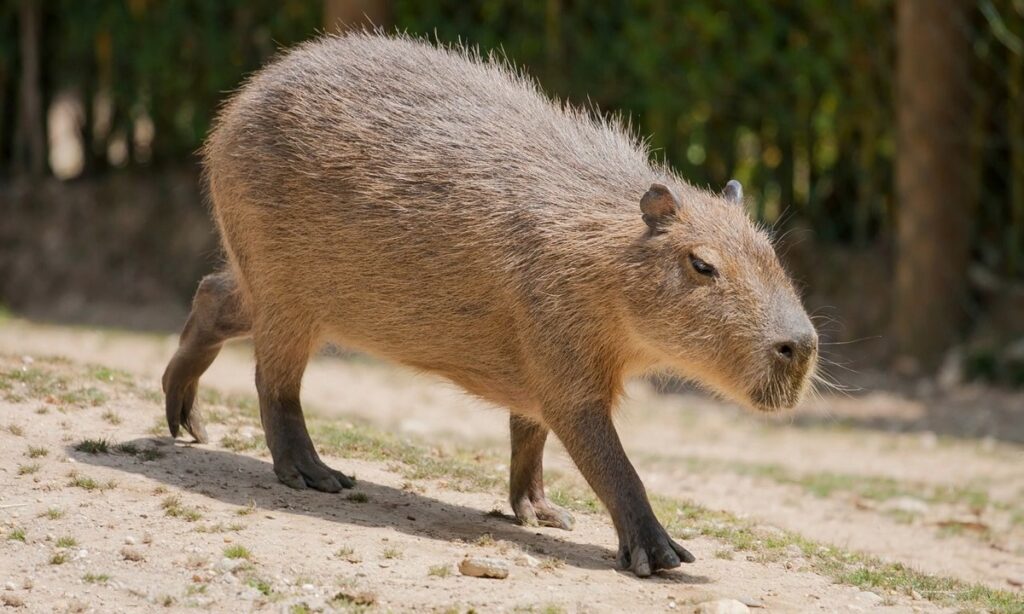
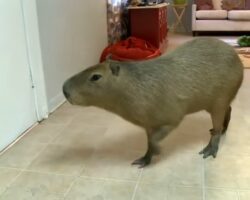
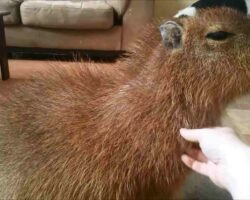
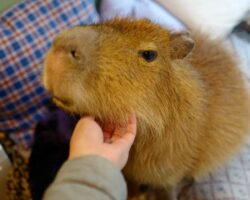
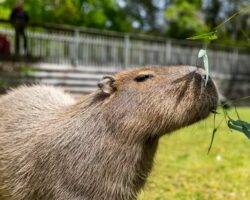
![Capybara Meat And Its Culinary Uses - [Every You Should Know] Capybara Meat & Culinary Uses](https://capybaratips.com/wp-content/uploads/2023/03/Capybara-meat-250x200.webp)
